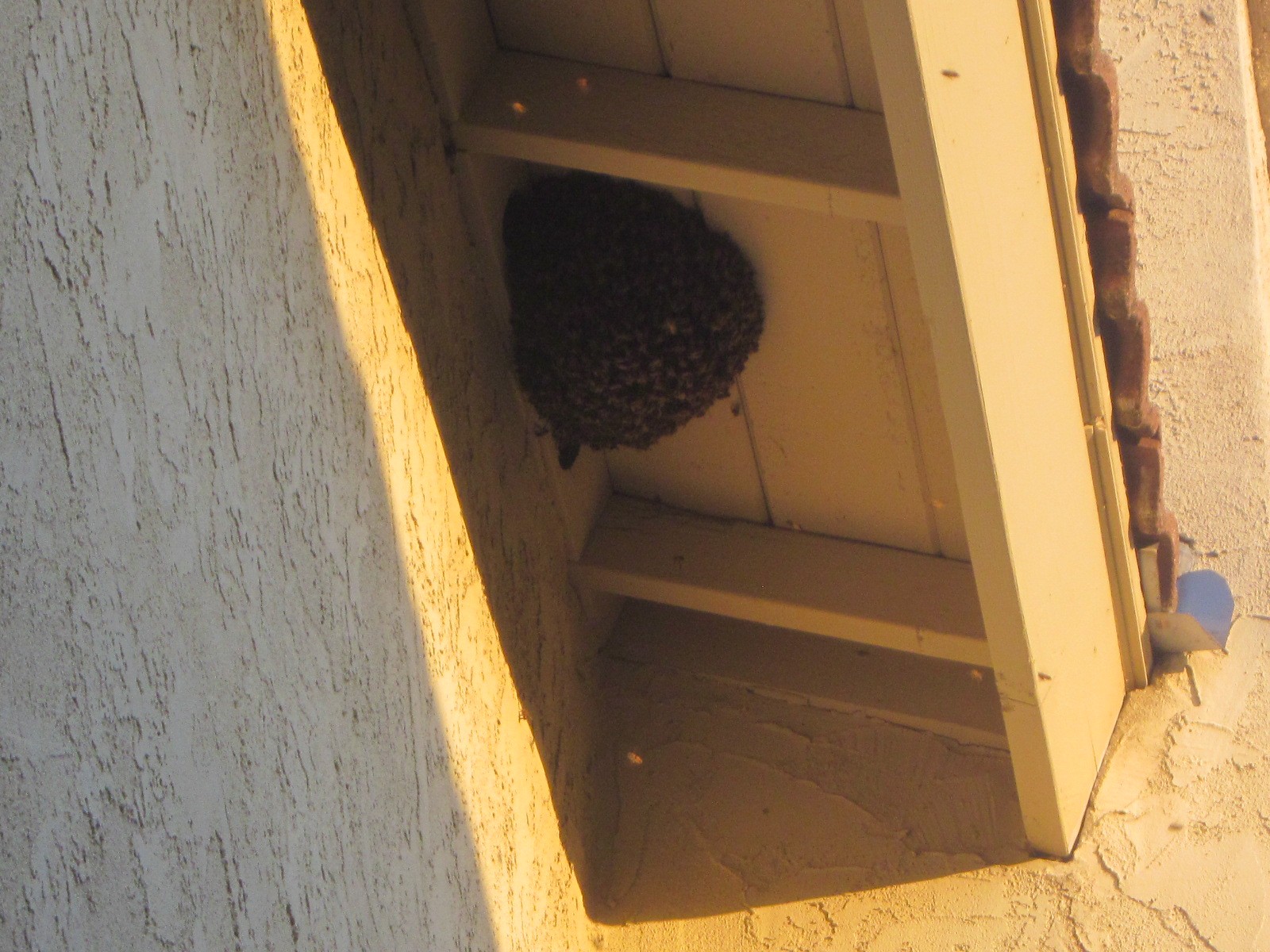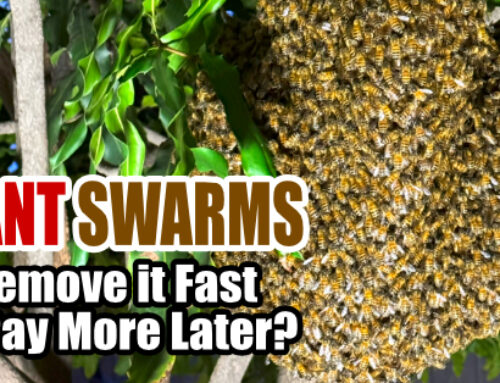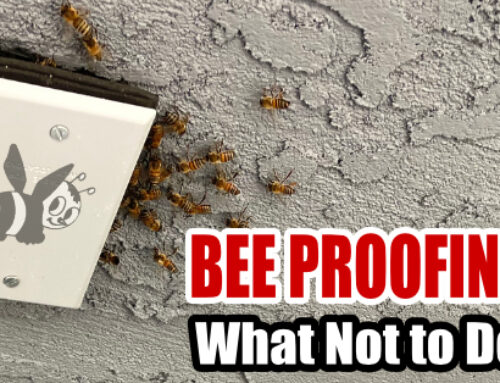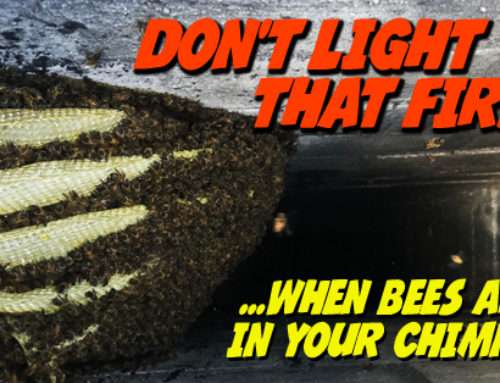It’s a fact. Bees often enter homes and structures through attic ventilation holes. It’s one of the more common places bees enter in order to build their hives. It actually makes sense if you think about it. Once the swarm is inside the attic they can build a hive in a place that is up high, usually deserted, and can often go undetected by homeowners.
Most homeowners don’t realize bees have invaded their home until they notice one of the following:
1. Bee flight activity near the vent holes on the exterior of the home.
2. A few straggler bees that get inside the living area of the home.
3. A strange odor or stain on the wall or ceiling.
When homeowners notice bee activity in the vents, they often disregard the problem because they can’t see the entire colony or hive. What they see is 10 – 20 bees flying around the vent hole. What they don’t understand is that those bees are just a few of the thousands that are inside the attic. If the problem is ignored the bees will eventually build a large hive that can cause major problems down the road.
Sometimes when a colony of bees first invade an attic through vent holes, a few bees will become disoriented and separated from the rest of the colony and end up inside the living area of the home. This is when the home owner usually calls us and claims that there are bees in the house, but they don’t know where they are coming from. When our technicians go out to inspect, the first area we scan are the vent holes.
In some cases homeowners don’t notice the bee problem for many months or even years. This is when the hive begins to cause major problems. In addition to having a fully established bee hive inside the attic, the problem is often compounded by one or more of the following:
1. The hive may begin to melt and cause honey to run down the wall in the heat of the summer. This can cause structural damage to drywall and ceilings.
2. The honey soaked wood can develop black mold which may stain ceilings, walls, and surrounding areas. Often times it will look like a water leak. Other times it may be dark in color and sticky to touch.
3. An odor of honey may become noticeable and may attract ants and rodents to the attic.
4. During swarm season, new swarms may emerge from the hive and cause new bee problems on or around the property.
Take a look at the video at the top of the page. It is a clip of a live swarm removal. The bees had just landed that day and the homeowners acted quickly and had us remove them before they moved into the attic. If they had waited the bees would have likely entered the attic and built a hive. By acting quickly we were able to remove the bees live without having to open up the wall or roof. This not only saved the bees but also saved them a lot of money.
If you notice a swarm near your attic vent holes, don’t delay. If the swarm appears to go away, take time to make sure they have not moved into the attic. Often times people will think the swarm has gone away, but if they look closely they will often notice bee activity going in and out of the vent holes. By taking care of the problem in the first week you will avoid a costly structural removal down the road.
Ever had bees invade your attic? Did they enter through vent holes? Share your story and how you solved the problem.








How much does it cost to remove the bees from our attic. Don’t want to kill the bees, since they are essential to our ecosystem . Please advise the cost. We are seniors in our late seventies who live on a restricted budget.
Hi Hannah. the cost of bee removal can vary dramatically, depending on the circumstances. It’s kind of like asking a car mechanic “How much is it to fix that knocking noise in my car’s engine?” It could be a few hundred dollars, it could be thousands, depending on a variety of different factors. The situation you describe would need to be looked at in person, in order to give you an accurate quote.